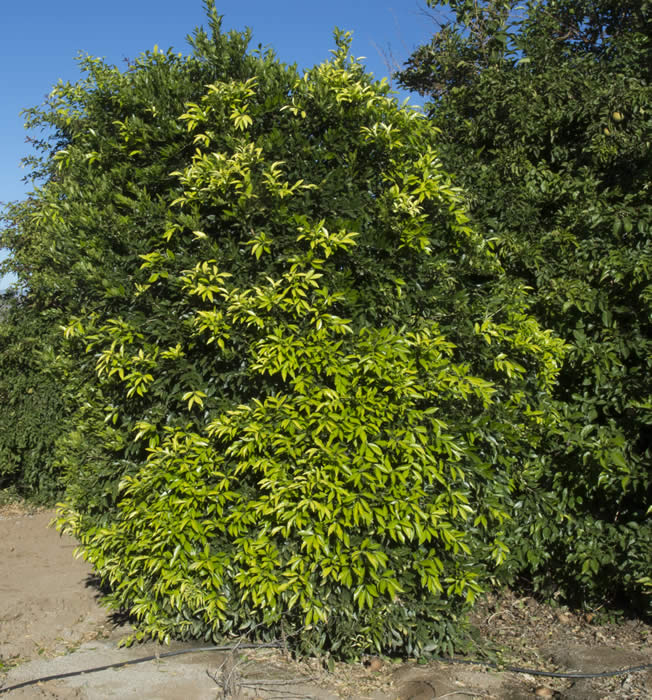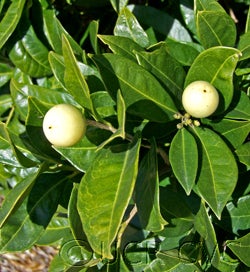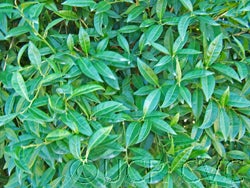Ceylon orangeaster
CRC 3117
PI 231073
Source
Received as seed from Ted Froelich, UCLA, 1957.
Parentage/origins
Parents unknown.
Rootstocks of accession
Own roots.
Season of ripeness at Riverside
August to December
Season of flowering at Riverside
April to June
Notes and observations
Received as seedling trees. "Seed was sent to us from H. Mauwing Kharzati, Mission Compound, Shilling, Assam, India."---T. Froelich.
EMN, 4/7/1988: Dr. Bitters implied that he knew which species of Pleiospermium this is, but wouldn't tell me; said I should go to South Coast & key it out. Trouble is: I did this and my key wouldn't fit. This accession doesn't match any of the 5 Pleiospermium species described in TCI, Vol. I, pp 290-294. Tim Williams opinion is that this is Pleiospermium but of a species not listed in TCI. And this is good enough for me until a true blue citrus taxonomist wanders through here some day.
Description from The Citrus Industry Vol. 1 (1967)
"Small trees with glabrous branchlets, sometimes with a single stout, straight spine up to 25 mm long at the side of the bud in the axil of the leaf, sometimes spineless, especially the fruiting branches; leaves 3-foliate [sic] (rarely 2- or 1-foliolate); lateral leaflets much smaller, all leaflets rather thick, glossy above, finely netted-veined beneath, lateral veins slender, not very conspicuous, making a very wide angle with the midrib, margins entire, the apex obtuse or subacute, rarely acuminate, bluntly rounded at the very tip, often emarginate, the leaflet blade abruptly narrowed to a cuneate base; petiole variable, 25-38 mm long, narrowly winged, articulated with the blade; inflorescences in clusters in the axils of the leaves or in terminal much-branched hoary panicles; flowers small, about 12-15 mm diam., 4-5-merous, pedicels rather short, finely pubescent; flower buds cylindric, rounded at the tip, more or less pubescent; calyx small, 4-5-lobed, sepals deltoid, finely pubescent; petals oblong or ovate, obtuse, entire, sparingly covered with fine pubescence without; stamens free, 8 or 10 (twice as many as the petals), filaments free, anthers large, erect, linear-oblong; pistil subsessile, seated on a low cupulate disk which clasps the base of the ovary for 0.5-0.8 mm; ovary obovoid, glabrous, 3.5-4.2 X 1.6-1.8 mm, 4-5 locular, with 2 ovules in each locule; style slender, gradually merging with the tip of the ovary and capped by a slightly thicker, subglobose stigma; fruits globose, 2.3-2.5 cm diam., like small oranges in appearance, the segments each containing 1 or 2 seeds surrounded with an aromatic, mucilaginous fluid, peel rough, dotted with numerous oil glands, seeds ovate, somewhat flattened, with a hard, smooth testa.
This species occurs rather commonly in the hot dry parts of southern India and Ceylon. The fruit is said to be very bitter; the wood is hard and heavy, yellowish, even-grained. The leaves have a strong lemon odor when crushed."
Availability
Not commercially available in California.
USDA Germplasm Resources Information Network page for Pleiospermium alatum


